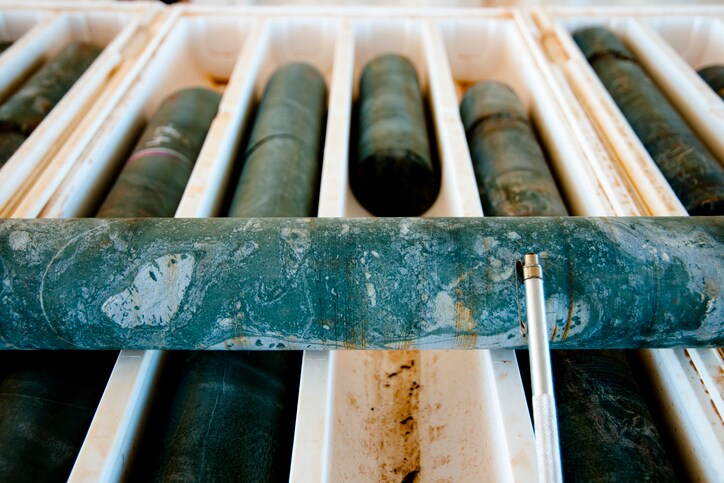 If you are in the mining industry, you know that drill core can be a valuable material. It can help ascertain if an area is worth mining, what minerals are abundant at the site, and what obstacles may be met if explored further.
If you are in the mining industry, you know that drill core can be a valuable material. It can help ascertain if an area is worth mining, what minerals are abundant at the site, and what obstacles may be met if explored further.
Mining.com recently named the Top 10 drill holes of the year as compiled by the Perth-based Opaxe company, which is used as a data source for the mining and minerals industry. According to the article, the best drill intersections around the world are reported and ranked according to gold equivalent grams per tonne using ruling metal and mineral prices. You can read about some of the top results in the article.
This past November, the USGS reported on drills from the Stillwater Mine area in Montana. The core was drilled and samples collected in order to define platinum-group element resources in the area.
After analyzing drill core, millions of dollars could be poured into resource development of the sites in hopes of many more millions of valuable material being extracted.
What happens to the drill cores? Some are housed at government agencies with their reports. Last year the USGS gave overviews of state, provincial, territorial, and national repositories that house drill core, other geoscience materials, and data. A Directory of Public Repositories of Geological Materials was developed to provide discovery information for anyone looking for publicly accessible repositories that house geological materials in the U.S. and Canada.
In addition, among other global sites, the Department of Natural Resources of New Brunswick, Canada, catalogues and stores core, bore hole cuttings and other related samples from exploration and mining programs conducted in the province. According to the agency,
Data obtained from drill and bore holes are used for subsurface bedrock orientation information, to obtain samples for chemical analyses, for estimation of the size, quality and value of the deposit, and for obtaining samples for processing or metallurgical assessment, porosity studies, etc.
Drilling is also very useful because the drill retrieves continuous core or chips of rock as it bores into the earth’s crust and is a permanent record of the rock attributes of the crust at that site, and is a relatively expensive means of delineating resources.
Sampling and drilling is a key part of mining exploration. A soil sampling program is conducted to develop drill targets from discovery holes. (We wrote about soil sampling in a previous article.) Rapid geochemical analysis from sampling programs enable mining operations to increase discovery success rates, identify drill targets quickly, make on-site decisions about whether to stop or continue drilling, and decide where to focus on the grid. Miners must also get an accurate report to the capital markets as fast as possible.
Portable XRF analyzers are used in this sampling process. XRF (X-ray fluorescence) spectroscopy is a non-destructive analytical technique used to determine the elemental composition of materials. XRF analyzers determine the chemistry of a sample by measuring the fluorescent (or secondary) X-ray emitted from a sample when it is excited by a primary X-ray source. Each of the elements present in a sample produces a set of characteristic fluorescent X-rays (“a fingerprint”) that is unique for that specific element, which is why XRF spectroscopy is an excellent technology for qualitative and quantitative analysis of material composition.
Using portable handheld XRF analyzers for mining and exploration enables assay analysis in real time, and can be used in mine mapping, ore grade control, and environmental compliance. The value of the instruments lie in not only being able to identify treasured metals and minerals during the exploration process, but also in saving money by providing information so mining operations know where not to drill as well.


Thanks for sharing valuable information!